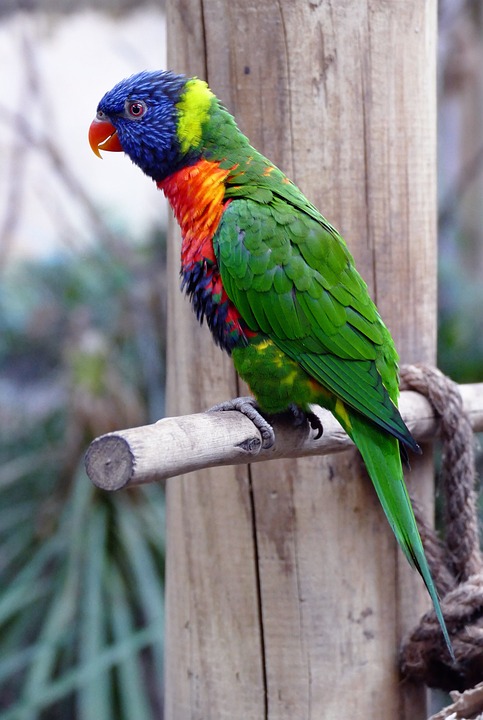Parrots are highly intelligent and social creatures that require regular exercise and socialization to maintain their overall well-being. In this article, we will discuss the importance of establishing a routine for out-of-cage time and social interactions with your parrot, as well as provide tips on how to create a safe environment, gradually introduce out-of-cage time, set up a dedicated play area, encourage social interactions, and incorporate training sessions.
Firstly, it is crucial to understand the importance of out-of-cage time for your parrot. Physical exercise is essential for maintaining a healthy body, while mental stimulation is necessary for a sharp mind. Additionally, socialization plays a vital role in your parrot’s emotional well-being. By allowing your parrot out of its cage, you provide it with the opportunity to exercise, explore, and interact with its environment, which is essential for its overall happiness and health.
Creating a safe environment is the first step in establishing a routine for out-of-cage time. Parrot-proofing your home involves removing potential hazards such as toxic plants and substances, securing windows and doors to prevent escapes, and ensuring that there are no dangerous objects within reach. By creating a safe space for your parrot to explore, you can minimize the risk of accidents and promote a stress-free environment.
When introducing your parrot to out-of-cage time, it is important to start slowly and gradually. Begin by allowing short periods of time outside the cage and gradually increase the duration over time. Observe your parrot’s behavior for any signs of discomfort or stress, and adjust accordingly. Each parrot is unique, and it is essential to respect their individual needs and preferences.
Setting up a dedicated play area is another crucial aspect of establishing a routine for out-of-cage time. Select a quiet area away from distractions where your parrot can feel safe and comfortable. Provide perches, toys, and activities that encourage physical exercise and mental stimulation. Incorporating natural elements such as branches or ropes can also provide additional enrichment for your parrot.
Encouraging social interactions with your parrot is vital for its emotional well-being. Engage in interactive play, using toys or games that stimulate their natural behaviors. Offer treats as positive reinforcement for desired behaviors and avoid forcing interactions. It is important to respect your parrot’s boundaries and allow them to initiate or decline social interactions as they see fit.
Incorporating training sessions during out-of-cage time can provide additional mental stimulation for your parrot. Teach them basic commands and tricks using positive reinforcement techniques such as rewards or clicker training. Make the training sessions fun and rewarding for your parrot, keeping them engaged and motivated.
In the frequently asked questions section, we address common concerns regarding parrot behavior during out-of-cage time. If your parrot refuses to come out of the cage, it is essential to be patient and take a gradual approach. Using treats to encourage exploration can help motivate your parrot. If you are facing difficulties, seeking professional guidance from a certified avian behaviorist or trainer can be beneficial.
The duration of out-of-cage time will vary depending on your parrot’s needs. However, a minimum of 2-4 hours per day is recommended. Gradually increase the duration based on your parrot’s behavior and preferences. It is essential to provide a balanced routine that includes exercise, socializing, and rest, ensuring your parrot’s overall well-being.
If you have other pets in the house, it is possible to let your parrot interact with them. However, it is crucial to supervise these interactions to ensure safety and compatibility. Avoid situations that may potentially harm or stress your parrot, and always prioritize the well-being of your feathered companion.
In conclusion, establishing a routine for out-of-cage time and social interactions is crucial for maintaining a happy and healthy parrot. By creating a safe environment, gradually introducing out-of-cage time, providing a dedicated play area, encouraging social interactions, and incorporating training sessions, you can ensure that your parrot receives the physical exercise, mental stimulation, and socialization it needs to thrive. Remember to be patient, observe your parrot’s behavior, and seek professional advice if necessary to ensure the well-being of your feathered companion.









